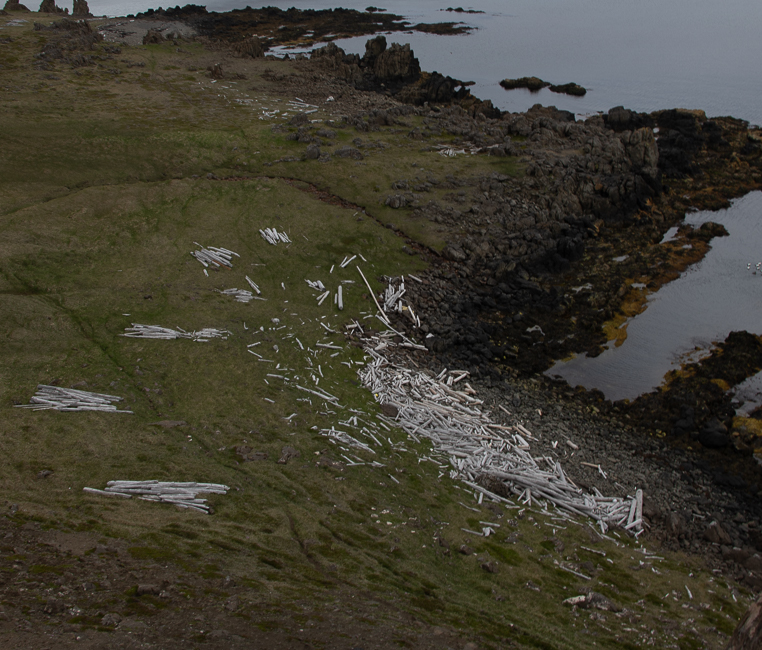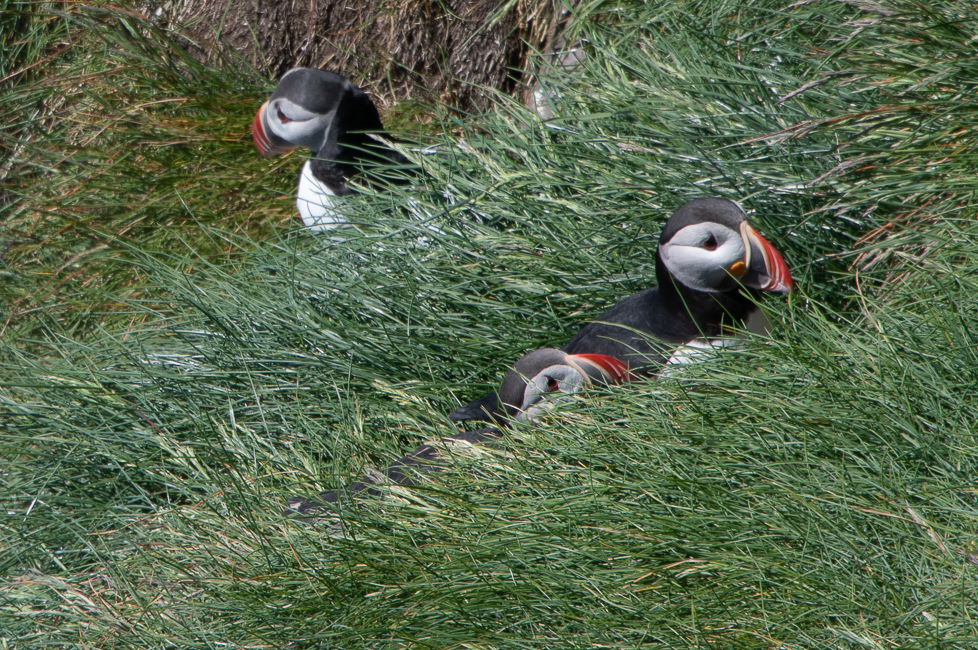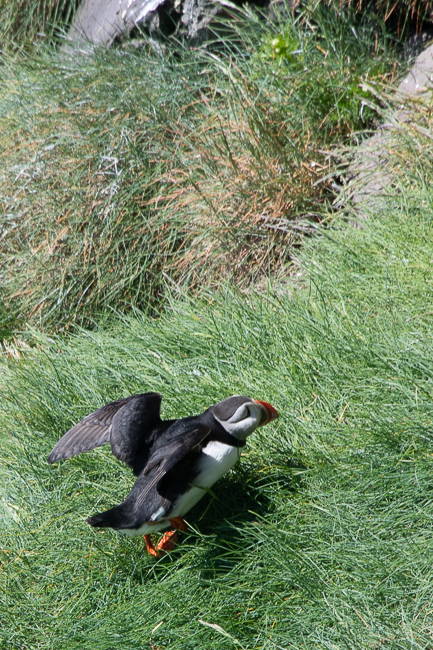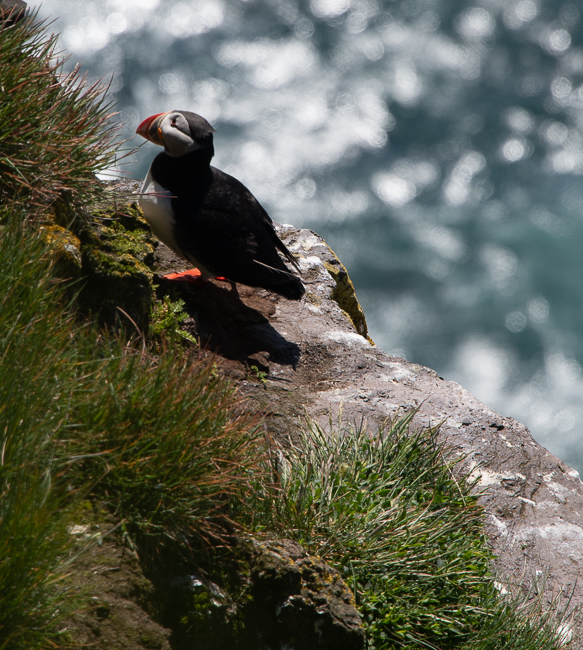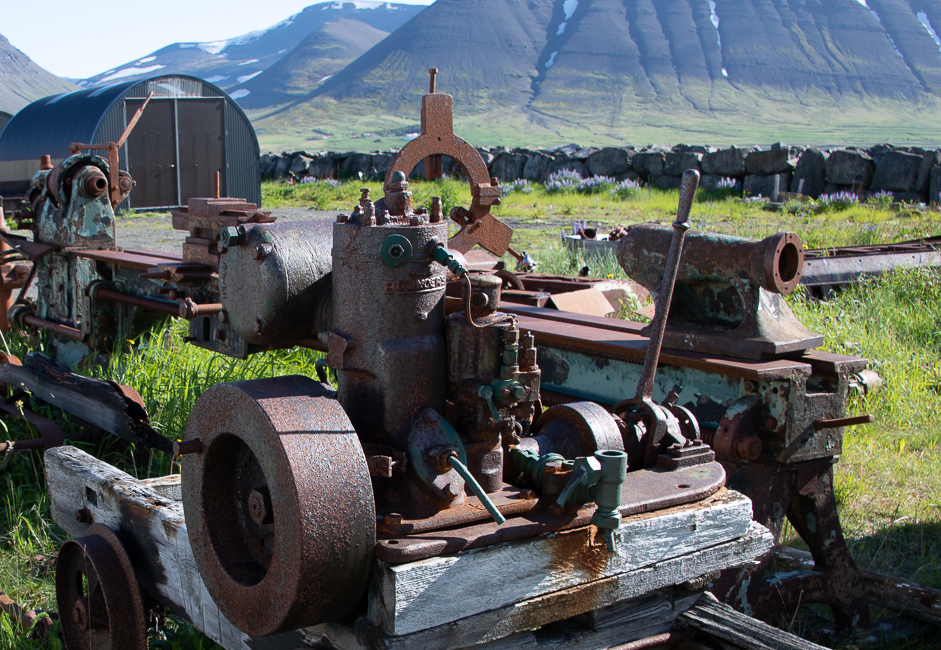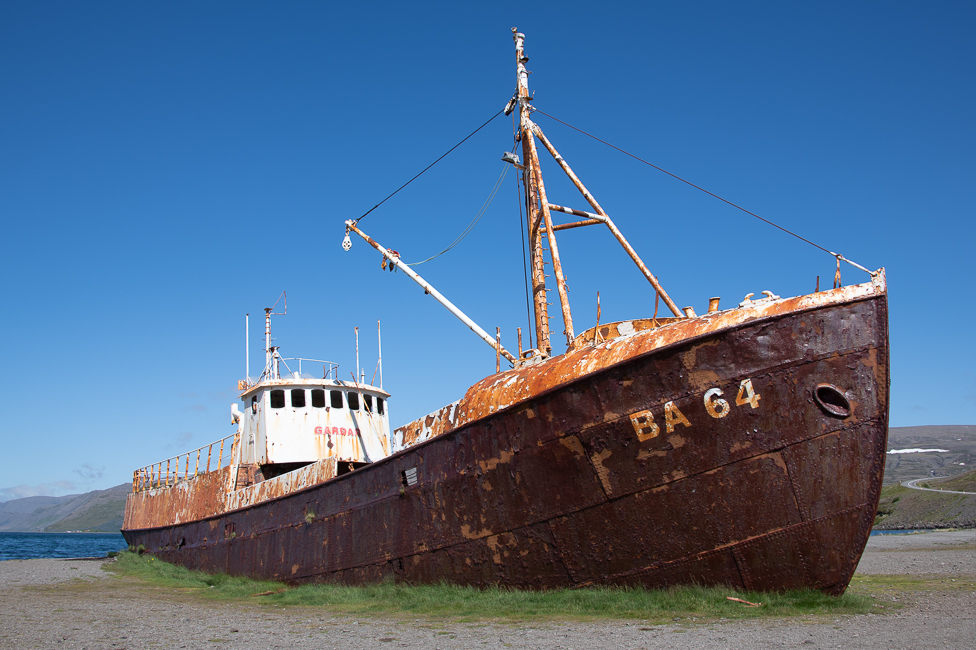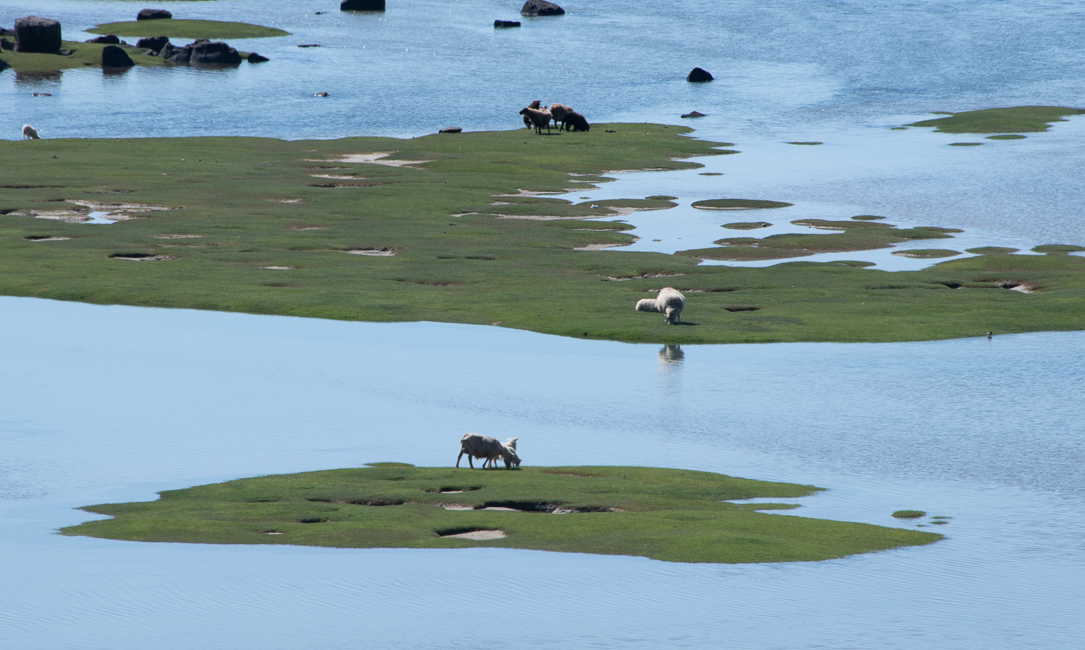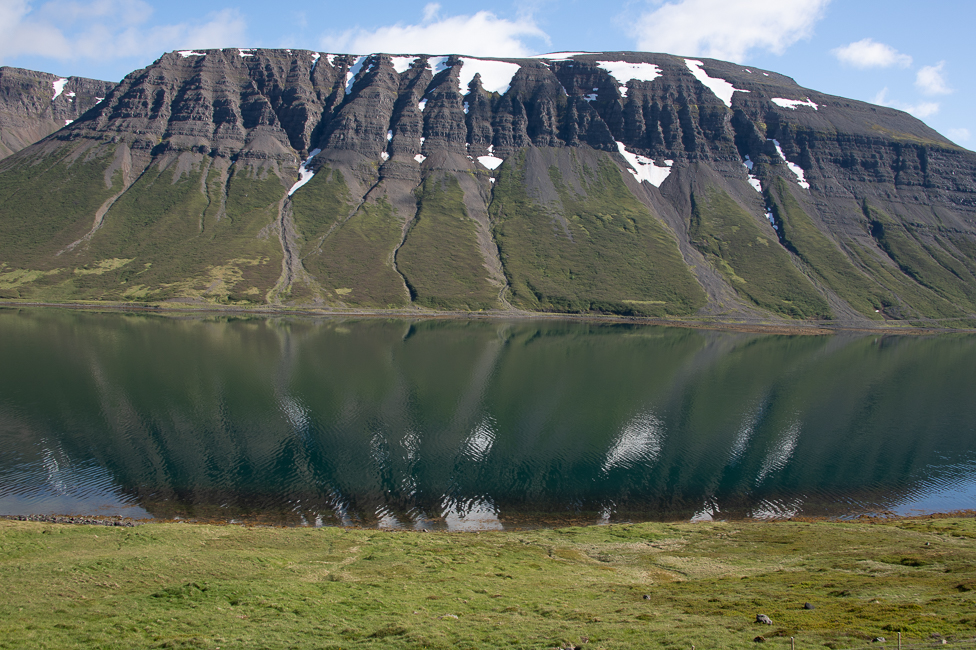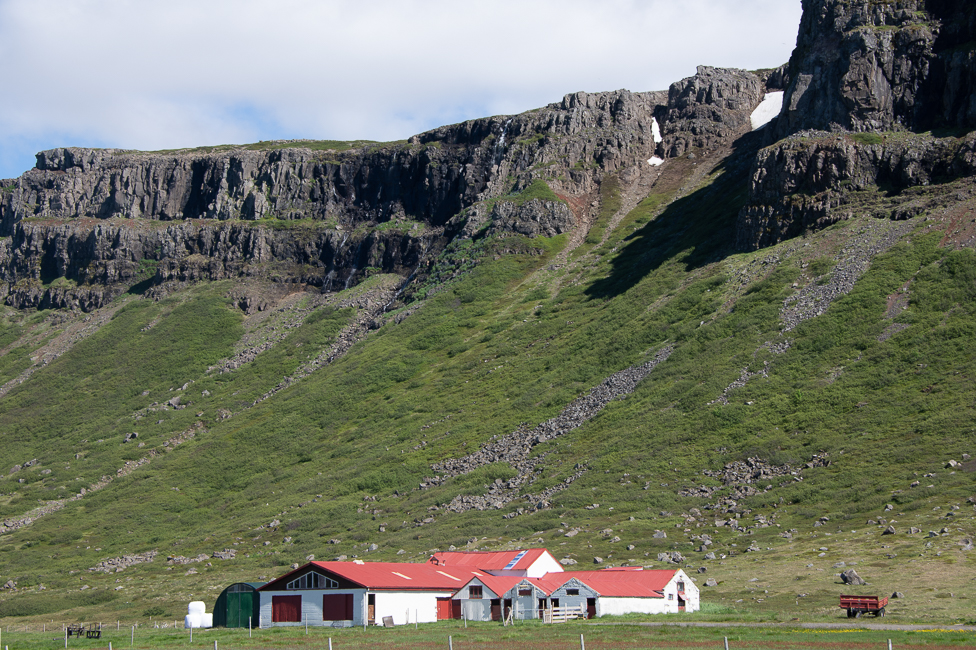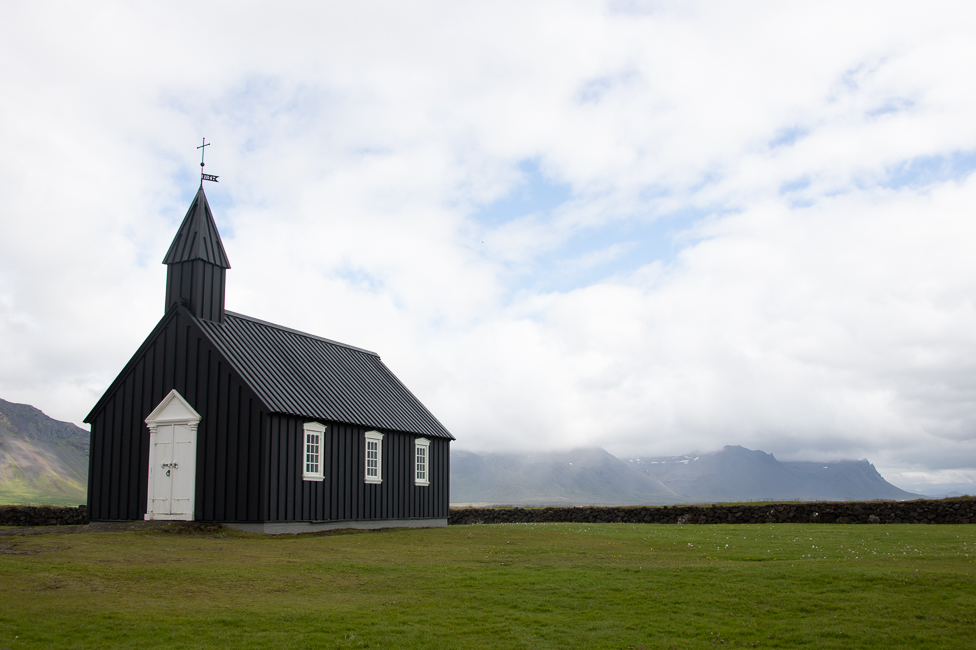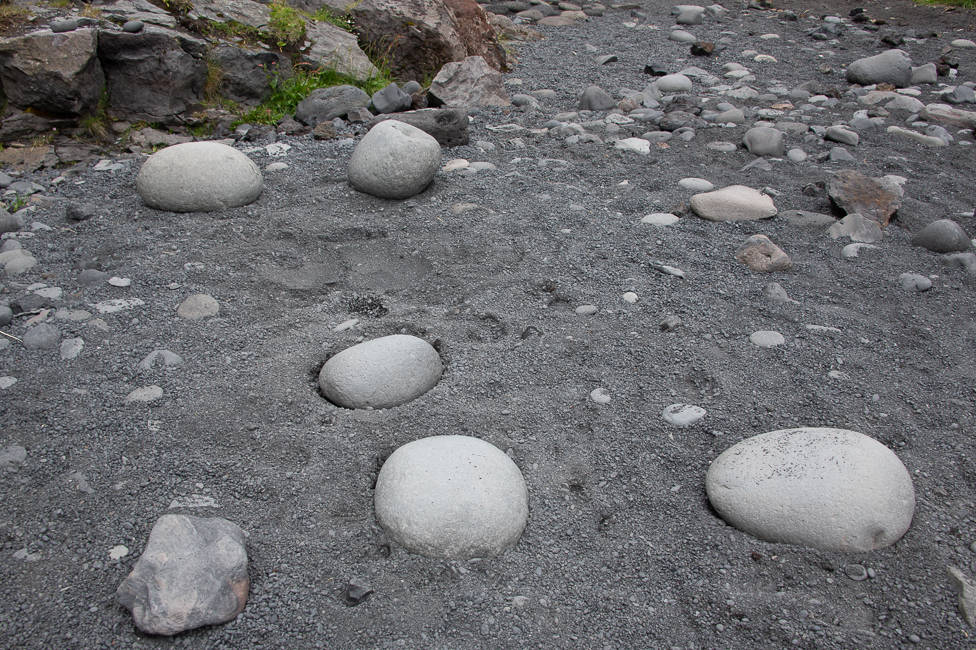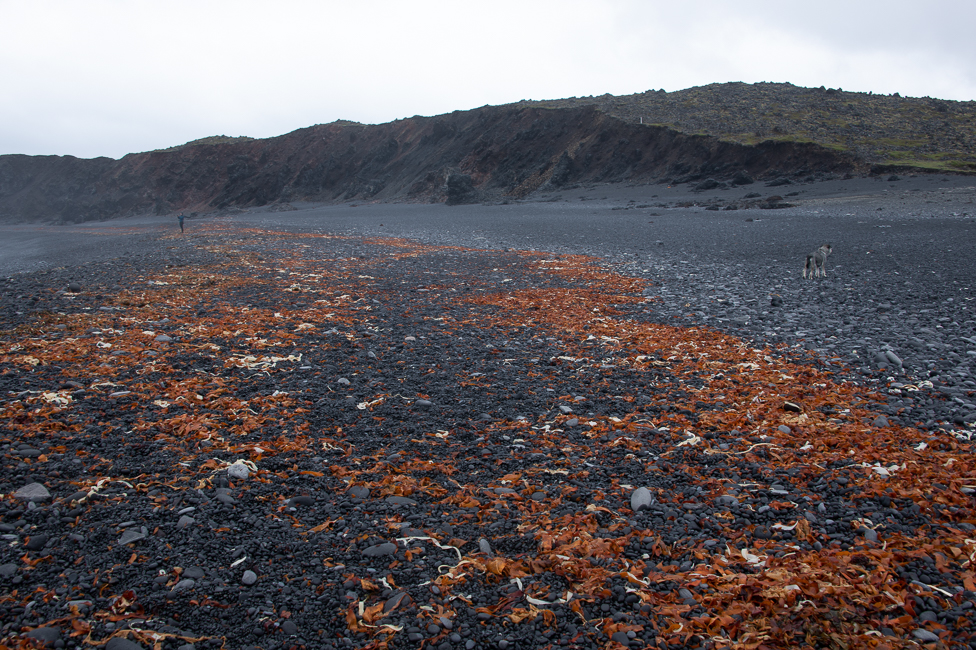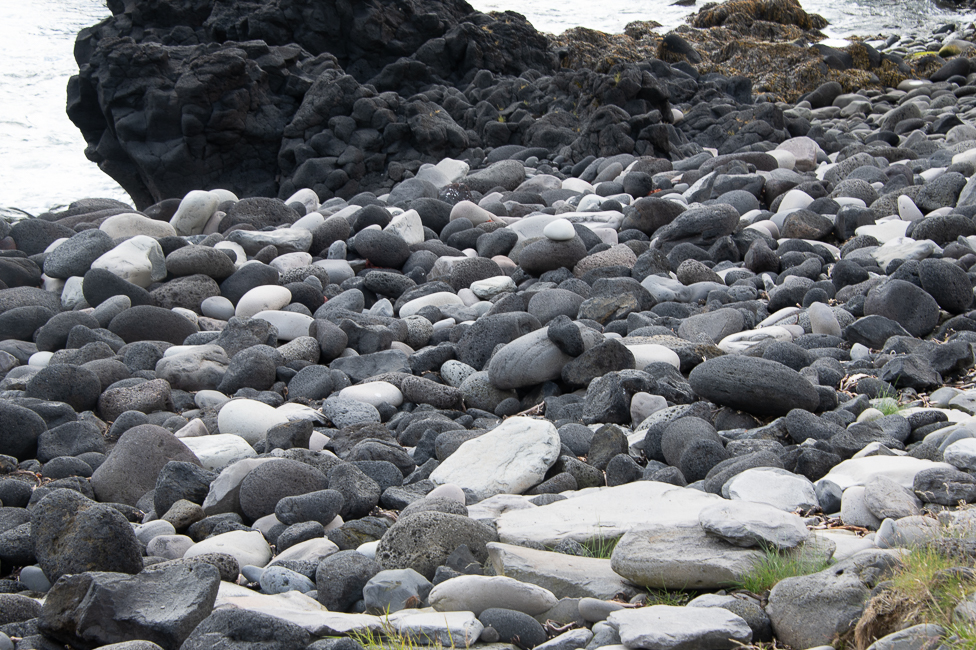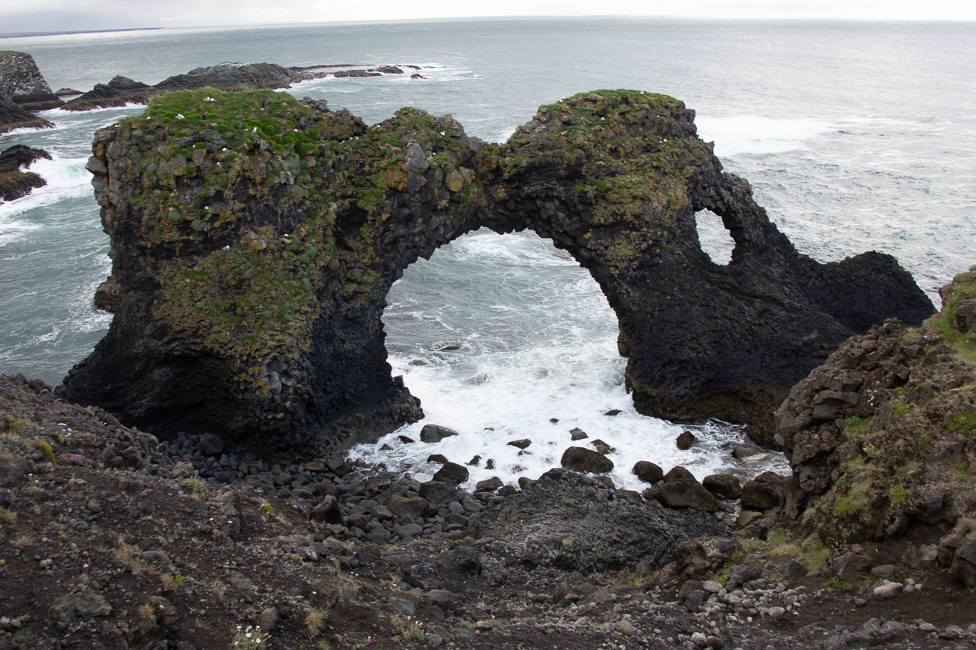June 2022
Westfjords are the oldest part of Iceland. They originated during a series of volcanic eruptions which took place during the Tertiary Period, around 14 to 16 million years ago. After an ice age which ended about 10,000 years ago, the progression of the glacier carved deep valleys and fjords in the landscape leaving behind layers of rocks of different degrees of hardness.
When first visiting the sod houses one learns that the lumber used in their construction was drift wood. It was confusing as there are so few trees on Iceland. Then as you drive the north and west you begin to see piles of driftwood that has washed ashore. It originates from the boreal forest regions of Siberia. The trees find their way to the Arctic Ocean via rivers where it is caught in drifting ice and rides the oceanic currents. Because of the relatively short buoyancy time of the driftwood, it spends most of its time frozen in sea ice. Dated samples of the driftwood show that it is possible for arctic driftwood to reach the coasts of Iceland in less than six years.
Puffins
I drove 62 miles, in one direction (62 on the return as well), on horrendous roads to Látrabjarg to see puffins. Alas, there were not very many to be found. Here are some fun shots of these adorable creatures.
Eider Ducks are everywhere in North and West Iceland. 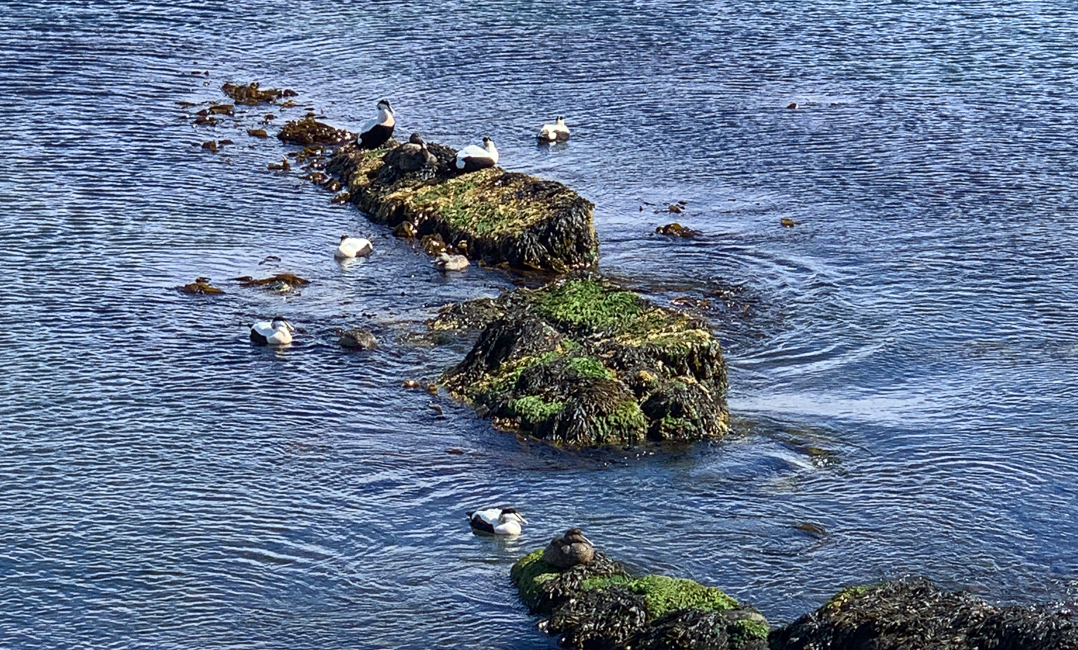
Eiderdown is the soft under-layer of feathers shed by the eider duck during nesting. The ducks line their nests with this down that they pluck from themselves.
Once the ducks are hatched and the mother duck leaves the nest, the down, lining the abandoned nests, is collected It is cleaned and processed and ready for down comforters and coats.
The early Viking settlers used eider down to fill their blankets, and medieval tax collectors would sometimes accept eiderdown as a form of currency. The birds became so important to Icelanders that, in 1847, the government officially designated the eider duck as a protected species. And the industry is so important to the Icelandic culture that the Icelandic government has officially-designated inspectors to check eiderdown for authenticity and quality.
The roots of Iceland’s stone lifting culture can be found in Dritvik. Historically, the sailors and fishermen who rowed out from this port would lift the stones to prove their worth to a ship’s crew.
I had only seen Arctic Foxes stuffed in the museum at Sudivik. While wandering the beach at Dritvik, an off leash dog took off running. It took me a moment to realize what he was running after and I was able to get off one shot. I was really lucky, Arctic Foxes don’t usually show themselves.
